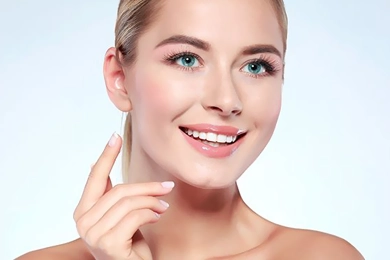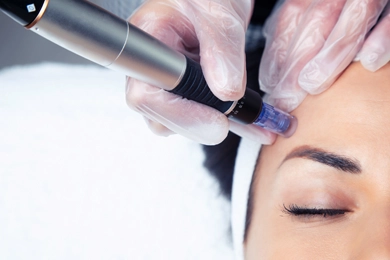
Autologous fibroblast cell therapy, also known as Fibrocell, has become a promising treatment for a variety of dermatological and cosmetic issues in the developing field of regenerative medicine.
Fibrocell provides an alternative to artificial treatments and surgery by utilizing the body's innate ability to repair itself. It is crucial to comprehend the science, advantages, and potential applications of fibrocell as you think about potential treatments.
Cells known as fibroblasts can be found in the connective tissues of every part of our body. Their main job is to produce the extracellular matrix proteins collagen, elastin, and others, which are vital for skin elasticity, resilience, and general health.
Autologous Treatment: The use of one's own cells or tissues is referred to as "autologous." It refers to using the patient's own fibroblast cells for treatment in the context of Fibrocell. Rejection or allergic reactions are significantly decreased as a result.
Procedure: A small piece of skin is removed from the patient, usually from the area behind the ear, which produces high-quality fibroblasts and leaves few scars. The fibroblasts from this sample are then isolated, multiplied, and grown into millions of new cells in a laboratory. Once prepared, the patient's target areas are treated with injections of these cultured fibroblasts.
Although fibrocell therapy has generally been well-tolerated, there can still be negative effects like with any medical procedure. Redness, swelling, or mild pain at the injection site are typical side effects. These typically go away in a few days.
People who would prefer a natural treatment option for wrinkles, acne scars, or other types of skin depressions might give Fibrocell some thought. A qualified dermatologist or cosmetic surgeon should be consulted to ascertain suitability.
Autologous fibroblast cell therapy stands out as a distinctive and efficient treatment in the era of personalized medicine because it combines the ideas of natural healing with cutting-edge scientific methodologies. Potential patients can make decisions based on knowledge and consideration of Fibrocell, putting their faith in the skill and expertise of their healthcare providers.
To determine whether Fibrocell is appropriate for you, always speak with a board-certified cosmetic surgeon.
It's a treatment that uses a patient's own fibroblast cells to rejuvenate the skin, treat wrinkles, and address scars.
Fibrocell therapy involves extracting, multiplying, and reintroducing a patient's own fibroblast cells to boost collagen production and improve skin health.
Fibroblasts are cells responsible for producing collagen, elastin, and other extracellular matrix components, crucial for skin elasticity and strength.
A small skin sample is taken, usually from behind the ear. It's then sent to a lab where fibroblasts are isolated and cultivated. Once ready, these cells are injected into the target areas.
No, it's a minimally invasive procedure involving cell extraction and injections.
A typical session lasts about 1 to 2 hours, excluding the time for fibroblast cultivation.
Common side effects include redness, swelling, or mild pain at the injection site, which usually subside within a few days.
Fibrocell uses the patient's own cells, making it a more natural treatment compared to synthetic fillers or Botox.
Results can be noticed in as early as a few weeks, but the full effect is generally seen after several months.
The effects can last for years since the newly introduced fibroblasts continue producing collagen.
Patients might experience mild discomfort during the procedure, but it's generally well-tolerated.
Most patients can return to their normal activities immediately, but it's advised to avoid intense physical activity for a day or two.
It's effective on various wrinkles and scars, but individual results can vary. Consultation with a dermatologist is recommended.
The skin sample is typically taken from behind the ear.
Fibrocell specifically targets and utilizes fibroblast cells, ensuring a more tailored treatment for skin rejuvenation.
Since the treatment uses the patient's own cells, risks of allergic reactions or rejection are minimal.
It varies based on individual needs, but usually 1-3 sessions are recommended for optimal results.
Patients should avoid direct sun exposure, intense physical activity, and follow any specific guidelines provided by their dermatologist.
There aren't strict age restrictions, but it's most commonly sought by adults seeking skin rejuvenation.
Yes, but always discuss with a dermatologist to determine the best treatment combination.
Both have their advantages. While laser treatments address surface skin issues, Fibrocell promotes deeper skin healing and rejuvenation.
Individuals with wrinkles, acne scars, or other skin depressions who seek a natural treatment method are ideal candidates.
Conditions like active infections, certain skin diseases, or immune disorders might disqualify someone. Always consult with a specialist.
Individuals with sensitive skin might experience heightened initial redness or irritation, but the therapy is generally safe.
Yes, Fibrocell can be used on various body parts where rejuvenation is sought.
While many experience positive results, outcomes can vary based on individual factors.
Such risks are minimal, but patients should follow post-procedure care guidelines and avoid excessive sun exposure.
Discuss your goals, medical history, potential risks, and the expected outcomes.
By promoting collagen production, it can enhance skin elasticity, texture, and overall appearance.
It may improve the appearance of stretch marks, but individual results can vary.
The cells are grown in controlled, sterile environments and undergo rigorous testing before being used.
Costs vary based on location, clinic, and individual needs. Consultation with a clinic will provide a specific figure.
As of my last update in 2021, Fibrocell therapies have received FDA approval for specific conditions, but always check with local authorities for current status.
Most skincare routines can be resumed, but avoid exfoliants or harsh products for a few days post-treatment.
Discuss any concerns with your dermatologist; additional treatments or alternative therapies might be suggested.
Long-term complications are rare, but always consult with a Cosmetic Surgeon about potential risks.
It's typically a one-time treatment, but based on results and needs, some might undergo additional sessions after a few years.
Yes, Fibrocell therapy can promote skin elasticity by enhancing collagen production. Improved collagen can also help retain moisture, indirectly boosting hydration.
While other autologous therapies might use various cells or plasma, Fibrocell specifically utilizes fibroblasts, targeting skin rejuvenation at the cellular level. Each therapy has its unique benefits, so the best choice depends on the individual's needs.
Typically, there's minimal to no downtime. Some might experience minor swelling or redness, but most daily activities can be resumed immediately.
 Rejuvenate Your Skin with Stem Cells
Rejuvenate Your Skin with Stem CellsIn the pursuit of vibrant, radiant skin, regenerative medicine has witnessed extraordinary progress. The use of autogenic fibroblast culture, also known as fibrocell therapy, to rejuvenate the epidermis is o Read More...
 Can Home Microneedling Be Performed?
Can Home Microneedling Be Performed?But is it possible to perform microneedling safely and effectively at home? And are there any possible negative effects of DIY methods? Read More...